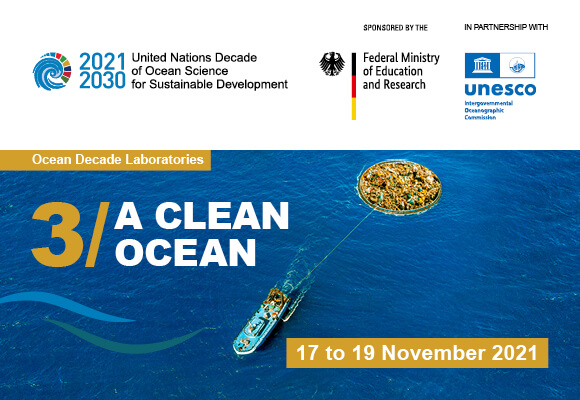The third Ocean Decade Laboratory “A Clean Ocean” focused on how to map the state of pollution in the ocean, how to clean it up, and how to establish sustainable ways to achieve the goals of “A Clean Ocean” – by 2030.
The third Ocean Decade Laboratory “A Clean Ocean” provided a source of inspiration for action among participants. Co-moderator Jesse Huntley Ausubel, Director of the Program for the Human Environment at the Rockefeller University, summed it up in his final remarks on 19 November:
“We are about one year into the UN Ocean Decade. Let’s already now set targets and timetables so that by 2030 we have made real strides towards a clean ocean”, he said.
Ausubel mentioned the Integrated Marine Debris Observing System and defining of standards for seabed mining as examples of immediate action that can be taken.
29 Satellite Activities were held during this third Ocean Decade Laboratory. They presented and discussed projects from around the globe, all with the common goal of achieving a clean ocean. One of the Satellite Activities, “Remote Sensing and Smart Tech for Marine Litter”, held in France, talked about how drones, planes and satellites help scientists monitor the level of debris in the ocean. Meanwhile, the live broadcast “A Floating Classroom” from the research vessel SONNE provided insights into four research projects currently being conducted in the seas around Greenland. Observing and detecting marine litter in the deep sea in order to protect biodiversity is the common goal of these research projects.
Mapping the state of pollution in the world’s ocean is a monumental task. But transforming it into a clean state is possible, as Jesse Huntley Ausubel pointed out:
“I am from New York and when I was a boy and you fell into the New York harbour, you had to get all kinds of vaccines to prevent infections from the dirty water. Now, there are humpback whales in the water. And last year, the water was clean enough for a woman to swim across the harbour to the Statue of Liberty.”
Chair of the Clean Ocean Expert Group Angelika Brandt, who is Head of Department Marine Zoology at the Senckenberg Research Institute and Natural History Museum Frankfurt, summarized the work needed to achieve the goals of a clean ocean: “We have a lot to do, and a long way ahead of us.”
If you missed the Ocean Laboratory “A Clean Ocean” you can see the Core Event and the Wrap-up in their entirety here: Core Event and Wrap-up.
To learn more about the “Manifesto for Clean Ocean 2030” presented by the members of the International Expert Group of the Ocean Decade Laboratory “A Clean Ocean” click here.
